Yo wassup explorers! Let’s go on an exciting trip to Manipur, the “Land of Jewels” There’s a special lake called Loktak that’s like no other. It has green plants all around it, and some of the land even floats on the water! The sky turns bright orange and red when the sun goes to sleep, and it feels like stories from a long time ago are floating in the air. Loktak Lake is a magical place you won’t forget!
Shiva here, your travel buddy for today’s adventure. Before we dive into the magic of Loktak Lake, let me tell you all about my unforgettable experiences there!
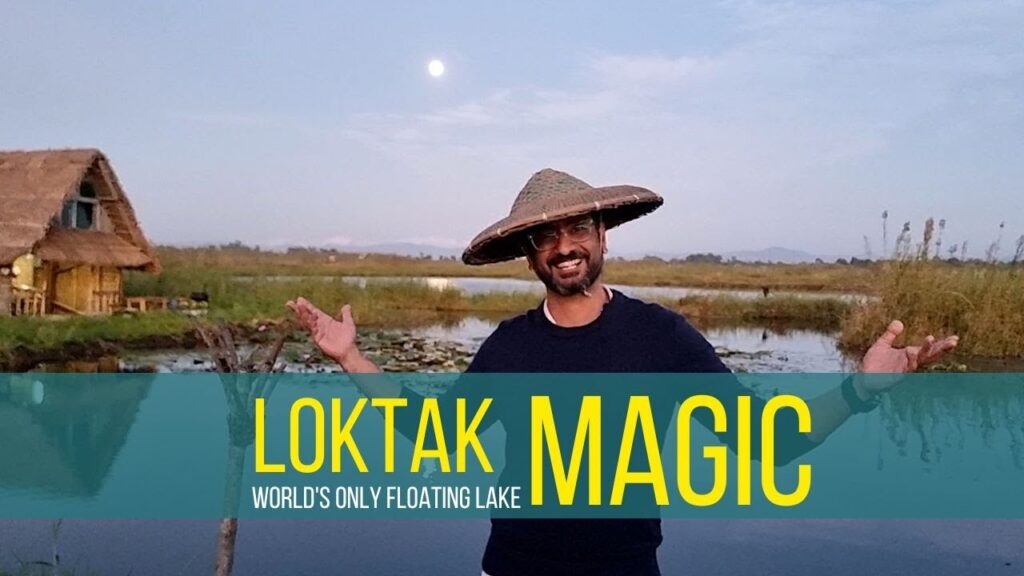
Table of Contents
ShivaTells Experiance in Loktak
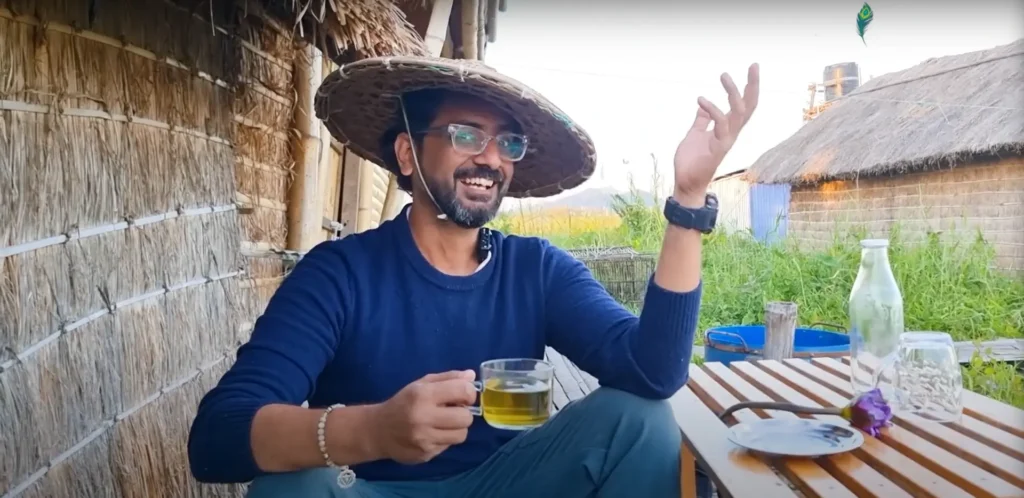
Let me tell you all about my magical time at Loktak Lake! Forget fancy resorts, this place was pure enchantment. Imagine sipping strong Manipuri black tea (strongest chai ever!), watching the sunrise paint the sky in fiery hues from the balcony of my…floating house! Yep, you heard that right!
Loktak Lake is unlike anything I’ve ever seen. It’s massive, but the coolest part is the phumdis – giant, spongy carpets of soil and plants chilling on the water. These phumdis create natural islands, and guess who lives there? The local fishermen! They’ve built their homes right on these islands, creating the world’s only floating National Park – Keibul Lamjao. This park is like a VIP zone for the rarest deer you’ve ever seen, the Sangai, with these incredible antler crowns. Seeing them graze on the phumdis is an experience I’ll never forget!
Walking on any patch of land here is a wild experience – the floor literally wobbles under your feet! But hey, that’s part of the Loktak charm! The fishermen rent out these floating homestays, and living on one is an adventure unlike any other. Picture waking up to a sunrise over the lake, the sound of birds chirping, and the gentle rocking of your home. Pure bliss!
Loktak isn’t just about beauty, though. It’s steeped in history and stories too. The Loktak Folklore Museum in Tangtongbram village blew my mind. Did you know there are legends about a powerful creature called Loktak Pabulai, a kind of lake dragon? Some say it was killed with a special harpoon, while others believe the name Loktak comes from “loki” (killing) and “taki” (all). Pretty cool, right?
Loktak is woven into the fabric of Manipuri life. We have rituals related to the lake, like offering thanks to the Salvan Leima (Forest Goddess) and remembering our ancestors. But there are also challenges. Uncontrolled pollution is causing problems with weeds jamming the shorelines. It’s a constant effort to remove them, but we’re working on solutions!
The good news is, Loktak provides much more than just beauty. It’s a source of livelihood for the local people. They use traditional fishing methods, like the “eingam” – a circular ring made from pieces of phumdi. It’s fascinating to see how they attract fish by putting feed inside the ring!
Also read one more story from Manipur – Thang-Ta Manipuri Martial Art: A Legacy of Warriors and Dance
Finding Your Way to the Floating Paradise: A Traveler’s Guide
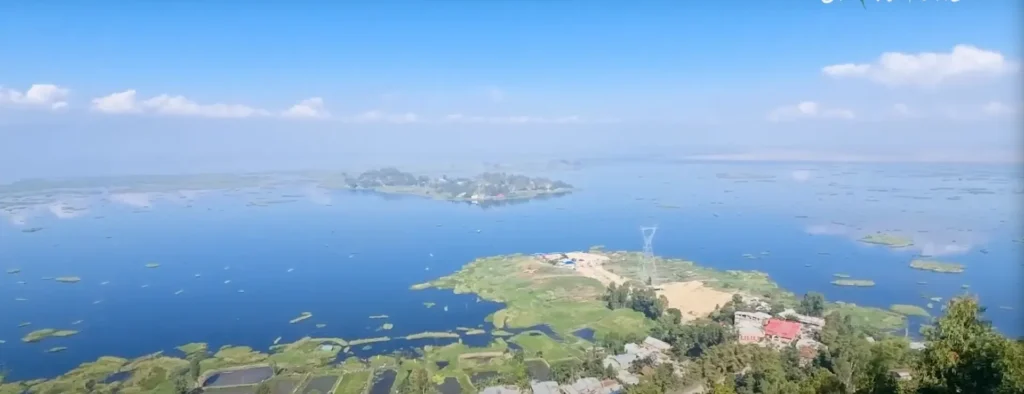
So, you’re hooked and ready to experience the magic of Loktak Lake firsthand? Here’s how to get there:
- Gateway to Manipur: Imphal, the capital of Manipur, is your starting point. It boasts the Bir Tikendrajit International Airport, which has good connectivity to major Indian cities.
- Land Ahoy!: From Imphal, you have a couple of options to reach Loktak Lake:
- Public Transport: For a budget-friendly option, hop on a shared taxi from Ima Keithel (Mother’s Market) in Imphal. These taxis ply regularly to Moirang, the gateway town to Loktak Lake (around 50 km distance). From Moirang, you can take a tuk-tuk (a three-wheeled auto) directly to the lake.
- Private Taxi: If you prefer a more comfortable journey, hire a private taxi from Imphal. This allows you to stop at interesting sights along the way and gives you more flexibility with your schedule.
- By Train (Optional): While not the most convenient option, Dimapur railway station is the nearest railhead to Loktak Lake (around 240 km away). From Dimapur, you can either take a taxi or bus to Imphal and then follow the steps mentioned above.
Insider Tip: November to March is the ideal time to visit Loktak Lake. The weather is pleasant, the skies are clear, and you’ll have the best chance of spotting the Sangai deer.
So, there you have it! With a little planning and this handy guide, you’ll be well on your way to exploring the wonders of Loktak Lake. Remember, the journey itself is part of the adventure. Soak in the vibrant atmosphere of Imphal, chat with the friendly locals, and get ready to be mesmerized by the floating paradise that awaits!
Picture Perfect: Floating Homestays and Sun-Kissed Mornings!
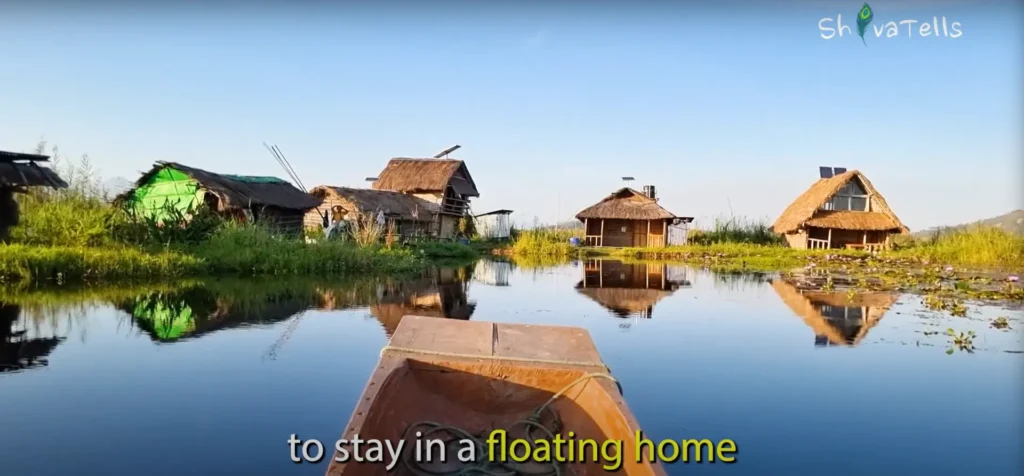
Forget fancy hotels! Here, your room comes with a built-in wobble. You’ll be staying in a cozy homestay, built right on a floating island made of phumdi – a spongy carpet of soil and vegetation that covers a massive chunk of the lake. Waking up to the gentle rocking of your home, the sun painting the water gold, and the sweet chirping of birds is an experience straight out of a fairytale.
Loktak Lake by the Numbers:
- Size: Spreads between 250 to 500 sq km, depending on the season!
- Location: Manipur, India.
- Unique Feature: Phumdi – a floating biomass that creates natural islands.
- National Park: Keibul Lamjao National Park, the world’s only floating park, home to the endangered Sangai deer.
Keibul Lamjao National Park: Where Nature Meets Adventure!
Hop on a boat and explore the wonders of Keibul Lamjao National Park. Keep your eyes peeled for the majestic Sangai deer, gracefully grazing on the phumdis. These shy creatures with their crown-like antlers are a sight you won’t forget.
Insider Tip:
- Best Time to Visit: November to March for pleasant weather and clear skies.
- How to Reach: Imphal, the capital of Manipur, is the nearest airport. From there, you can take a taxi or bus to Loktak Lake (around 50 km).
Loktak: A Place Steeped in History and Whispers of Legends!
Loktak isn’t just about stunning scenery; it’s a place brimming with stories. Head to the Loktak Folklore Museum in Tangtongbram village and dive into the fascinating world of Manipuri folklore. You’ll hear tales of the mighty Loktak Pabulai, a legendary lake dragon that some say was vanquished with a special harpoon.
Loktak’s Name: Unveiling the Mystery!
The name Loktak itself has a story to tell. In Manipuri, it translates to “end of the stream,” referring to the rivers that flow into the lake from the surrounding hills. But some believe the name has a darker origin, coming from “loki” (killing) and “taki” (all). Explore the museum and hear the different interpretations, then decide for yourself!
Loktak and Our Traditions: A Deep Connection!
Loktak Lake is intricately woven into the fabric of Manipuri life. We have rituals dedicated to the lake, like offerings to the Salvan Leima (Forest Goddess) and ancestor worship in our homes. Visiting Loktak means experiencing a place that holds deep cultural significance.
Respecting Loktak: Balancing Progress and Conservation!
Loktak faces challenges too. Pollution and uncontrolled growth of aquatic weeds threaten the lake’s health. But the people of Manipur are working hard to find solutions. Removing weeds is a constant effort, and we’re exploring ways to ensure sustainable development.
Loktak’s Bounty: Fishing the Traditional Way!
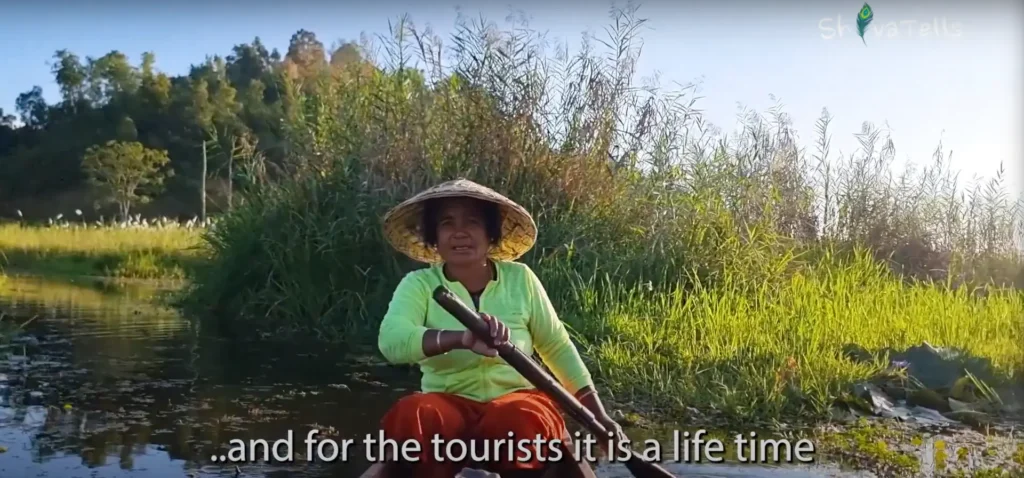
Loktak provides for the local community. The fishermen here use unique methods, like the “eingam” – a circular ring made from phumdi pieces. Watch in awe as they lure fish by placing special feed inside the ring!
Beyond the Lake: Exploring Manipur’s Delights!
Your Loktak adventure doesn’t stop at the lake! Manipur is a treasure trove of vibrant festivals, delicious food, and breathtaking landscapes. Here’s a quick taste:
- Festival Frenzy: Immerse yourself in the colorful festivities of Manipur. From the vibrant Lai Haraoba, celebrating spring, to the energetic Yaoshang with its joyous drumming, there’s a festival for every mood.
- Food for the Soul: Don’t miss out on Manipuri delicacies! Sample the unique “Kanghou” (fermented fish) – a local favorite (be warned, it’s an acquired taste!). For a safer bet, try the delectable “San mee” (rice noodles) with fresh local vegetables.
Loktak Lake: A Call to Adventure!
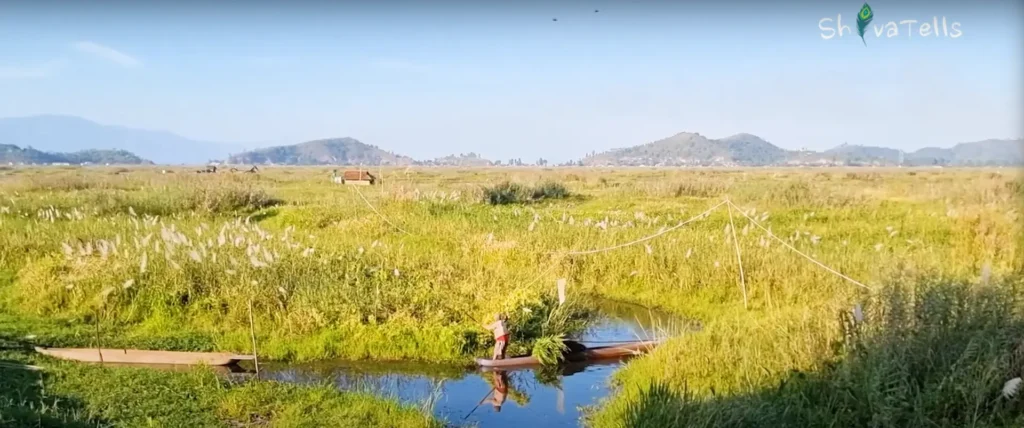
Loktak Lake is more than just a tourist destination; it’s a call to experience a place where nature thrives, traditions endure, and legends whisper on the wind. Here are some tips to make your Loktak adventure unforgettable:
Planning Your Loktak Escape:
- Accommodation: Book your stay in a floating homestay well in advance, especially during peak season (November to March).
- Essential Gear: Pack light clothes for the warm weather, a hat, sunglasses, and sunscreen. Don’t forget a waterproof camera to capture the lake’s magic!
- Respecting the Environment: Loktak is a fragile ecosystem. Be mindful of your waste and avoid using plastic. Opt for local, reusable souvenirs.
Exploring Loktak Lake Like a Pro:
- Boat Tours: Take a boat tour to explore the lake’s vastness, spot the Sangai deer, and get up close to the phumdis.
- Homestay Experiences: Chat with the local families who live on the floating homestays. Learn about their way of life, fishing techniques, and the importance of preserving the lake.
- Birdwatching Paradise: Loktak is a haven for birdwatchers. Keep your eyes peeled for cormorants, darters, and even endangered species like the spot-billed pelican.
Beyond Loktak Lake: Unveiling Manipur’s Gems:
- Manipur Polo: Witness the unique Manipuri polo, a fast-paced and exciting sport played with long bamboo sticks and a small ball.
- Trekking Adventures: Manipur boasts stunning hill ranges like Ukhrul and Tamenglong. Embark on a trek and discover cascading waterfalls, hidden villages, and breathtaking panoramic views.
- Cave Explorations: Manipur has numerous caves waiting to be explored. Visit the Shivalai Caves, known for their stalagmites and stalactites, or the scenic Thangjing Caves.
Loktak: More Than Just a Pretty Picture!
Your Loktak experience will be more than just stunning photos. It’s about connecting with nature, understanding a unique culture, and becoming a part of the story. Here’s how you can make a lasting impact:
- Support Local Communities: Choose homestays run by local families and buy souvenirs from local artisans. This helps support their livelihood and preserve traditional crafts.
- Responsible Tourism: Be mindful of your waste and avoid polluting the lake. Opt for eco-friendly practices whenever possible.
- Spread the Word: Share your Loktak experience with friends and family. Raise awareness about the importance of conserving this unique ecosystem.
Loktak Lake is a place that will stay with you long after you leave. It’s a reminder of the beauty and fragility of our planet, the importance of respecting traditions, and the power of legends that continue to inspire us. So, pack your bags, embrace the adventure, and let Loktak Lake weave its magic on you!
Remember, you’re not just a tourist in Loktak; you’re a guest in a place steeped in history, culture, and breathtaking natural beauty. Come with an open mind, a curious spirit, and a willingness to be amazed!
